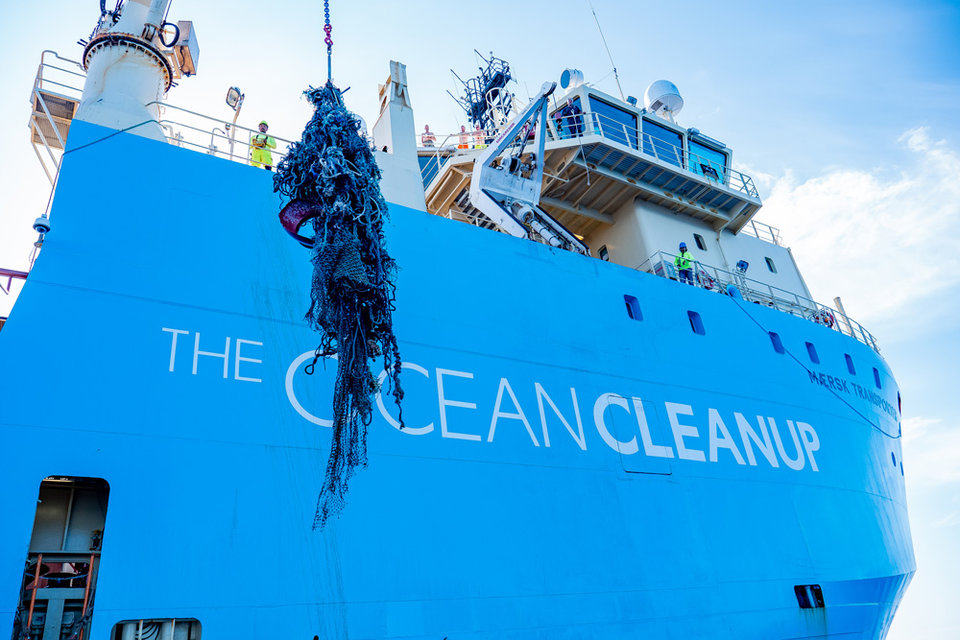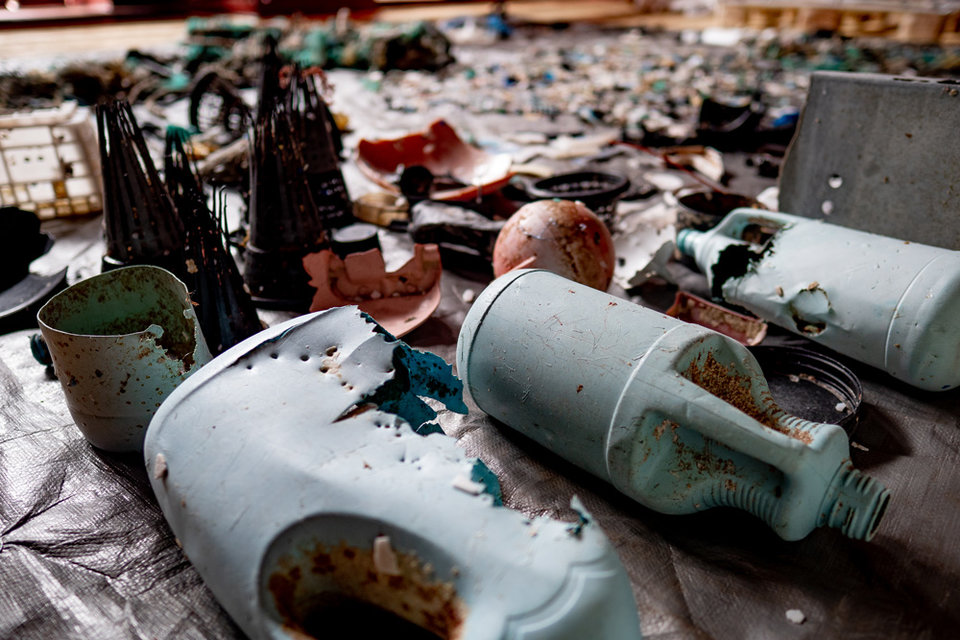RECYCLING | PLASTIC
Sea of opportunity:
is recycled ocean plastic the next big packaging trend?
Last year, Dutch non-profit The Ocean Cleanup announced plans to make products from plastic caught during its first mission within the Great Pacific Garbage Patch. With other groups looking to create new products out of reclaimed ocean plastic, Ross Davies looks into the opportunities for the packaging industry.
By the estimates of The Ocean Cleanup Project, a Dutch non-profit group, a pile of rubbish is accumulating in the Pacific Ocean that is roughly three times the size of France.
Largely comprised of ghost nets – discarded fishing nets – this area of floating detritus, located between Hawaii and California, is infamously known as the Great Pacific Garbage Patch.
Since being founded in 2013 by 18-year-old Boyan Slat, The Ocean Cleanup Project’s mission has been simple: to rid the seas of plastics. Slat, a self-professed inventor and entrepreneur, has had little trouble drumming up support and publicity for the foundation. In 2014, a year after its launch, The Ocean Cleanup raised $2 million in a little under 100 days, as part of a crowdfunding campaign to develop an ocean-going plastics extraction device.
After five years of ongoing research, sizeable publicity and a few false starts – in 2018, its 600 metre long floating barrier deployed to the Great Pacific Garbage Patch failed to collect any debris – the group reported in October 2019 that its clean-up system was successfully catching and, most importantly, retaining plastic.
The plan now, says Slat, is to convert the plastics returned from “mission one” into sustainable products. The group has since partnered with international classification society DNV GL to verify that plastics produced have been extracted exclusively from the ocean.
Contingent on private donations and sponsorships, The Ocean Cleanup is targeting a product launch for September 2020.
“I believe we can use this trash to turn a problem into a solution by transforming this unique material into a beautiful product,” said Slat in December. “As most people will never go to the Great Pacific Garbage Patch, through these products, we aim to give everyone the opportunity to take part in the clean-up.”
Sea change: Other companies looking to develop products out of ocean plastic
The Ocean Cleanup is not alone when it comes to looking to recycle ocean plastics for other uses. Mindful of the emergence of environmentally-conscious consumers, a number of multinationals are looking to tap into the trend.
The packaging industry has woken up to the potential value of waste plastics
Last year, beverage group Coca-Cola revealed a bottle partly produced from marine waste, which had been collected by volunteers and fishermen off the beaches of Spain and Portugal. The company has pledged to have all of its bottles comprised of 50% recycled plastics within the next decade.
Meanwhile, household goods manufacturer SC Johnson last year announced the launch of a partnership with Plastic Bank, a Canadian NGO, to develop a new a “100% social plastic bottle”, recycled from ocean plastic waste.
A dirty word: Existing preconceptions around plastic
According to Catherine Joce, sustainability and circular economy lead at product development company Cambridge Consultants, a British product development company, the issue of ocean plastics “resonates with the consumer, following nature documentaries and hard-hitting visuals involving marine life. Brands are keen to be seen to be taking action.”
However, Joce – who is currently leading a project that aims to replace current plastics with PHA bioplastics in convenience food packaging – stresses that the winching of plastics from the oceans it not a remedy for the larger issue at hand of rampant plastic pollution. Rather, it is about creating a positive solution from a global negative.
“Collecting waste plastics from the ocean is treating the symptoms of our malfunctioning waste management system and isn’t a cure for oceanic pollution,” Joce explains. “What is really fantastic is that the packaging industry has woken up to the potential value of waste plastics in general, as a feed stock for chemical processes.”

A ghost net being picked up in the Great Pacific Garbage Patch. Courtesy of The Ocean Cleanup
Plastics have a role to play in the transition towards a circular economy. Yet for some, plastic is a dirty word, synonymous with waste and environmental toxicity. If the reuse of ocean plastics is to gain momentum, how much might these preconceptions need to be challenged?
“Plastics are not the problem,” says Joce. “It is the way in which we currently use them that is the problem. With better regulations, more sustainable designs and more unified, demystified collection systems that take the burden of responsibility from consumers, we can live responsibly and relatively care-free with plastic products.
“We may even be able to decouple from the reliance on fossil fuels due to research into bio-derived polymers, meeting the majority of our needs using remediated sources which – hopefully only in the short-term – includes oceanic plastic.”
Challenges: The effect of seawater on recyclability
Plastics entering the ocean is a “relatively recent phenomenon,” says Joce. She’s not wrong. To provide some historical perspective, the Pacific Ocean was formed 750 million years ago, while synthetic plastic was invented in 1907.
This means there are still plenty of lingering questions over the long-term effects for plastics strewn in the sea. Some researchers suggest exposure to seawater can lead to degradation, in turn making recycling a more difficult – and expensive – process.
“Those plastics that float have been shown to be degraded by reactions initiated by UV-radiation, mechanical action, hydrolysis, and micro-organisms,” affirms Joce.
“This degradation releases chemical compounds to the water, and also means that a lower proportion can be easily incorporated into recycled products when mechanically recycling – which is the most common and lowest cost method.”

Plastic catch being sorted on-board the Ocean Cleanup vessel. Courtesy of The Ocean Cleanup
The biggest challenge of all, for Joce, is making the process of collecting plastic from the oceans more financially sustainable – bearing in mind, The Ocean Cleanup’s project has cost $20m to date. “Operating ships is costly and a net full of plastic hardly compares with the value of a net full of fish,” she says.
But the alternative – in which plastic is allowed to further accumulate in the oceans unabated – is too desperate to bear thinking about. According to the Ellen MacArthur Foundation, if waste-management systems continue to fail us, the weight of ocean plastic in waters will be comparable to that of fish by 2050.
But out of this challenge comes opportunity. According to research constructed by the same non-profit, the eight million tons of plastic discharged into the oceans each year equates to roughly $10bn worth of packaging materials, based on today’s market prices.
If these figures are to be believed, then the packaging industry could be facing the dual prospects of greater sustainability and an extraordinary bounty of raw materials at its disposal.